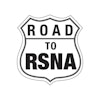Wednesday, December 4 | 3:40 p.m.-3:50 p.m. | W7-SSBR09-5 | Room S406A
The combination of a machine learning model based on clinical data with pre-treatment MRI morphologic and radiomic data improves prediction of treatment response in breast cancer patients undergoing neoadjuvant therapy, French researchers have reported.
In this Wednesday afternoon session, presenter Rami Hajri, MD, of Gustave Roussy in Villejuif will share findings from a study he conducted with colleagues that included 235 women with nonmetastatic breast cancer who underwent neoadjuvant therapy. The investigators used study participants' clinical features (age, genetic mutations, hormonal receptors expression, HER2 status, and histological grade) as well as morphologic and radiomic data taken from pretreatment MR imaging to develop a range of models for predicting breast cancer treatment response.
They found that the most effective model combined clinical features with MRI morphologic and radiomic information, with an area under the receiver operating curve (AUC) of 0.72. This model's performance showed even more efficacy among women with triple-negative breast cancer (AUC, 0.8).
The study results could translate to better patient care, the researchers noted.
"With potentially growing indications of neoadjuvant therapy in breast cancer patients, prediction of the pathological complete response could eventually lead to optimized treatment tailoring thus improving the personalization of therapeutic strategies and may even in the future avoid surgery in some cases," they wrote.
What else did they find? Check out this presentation on Wednesday afternoon for all of the details.

